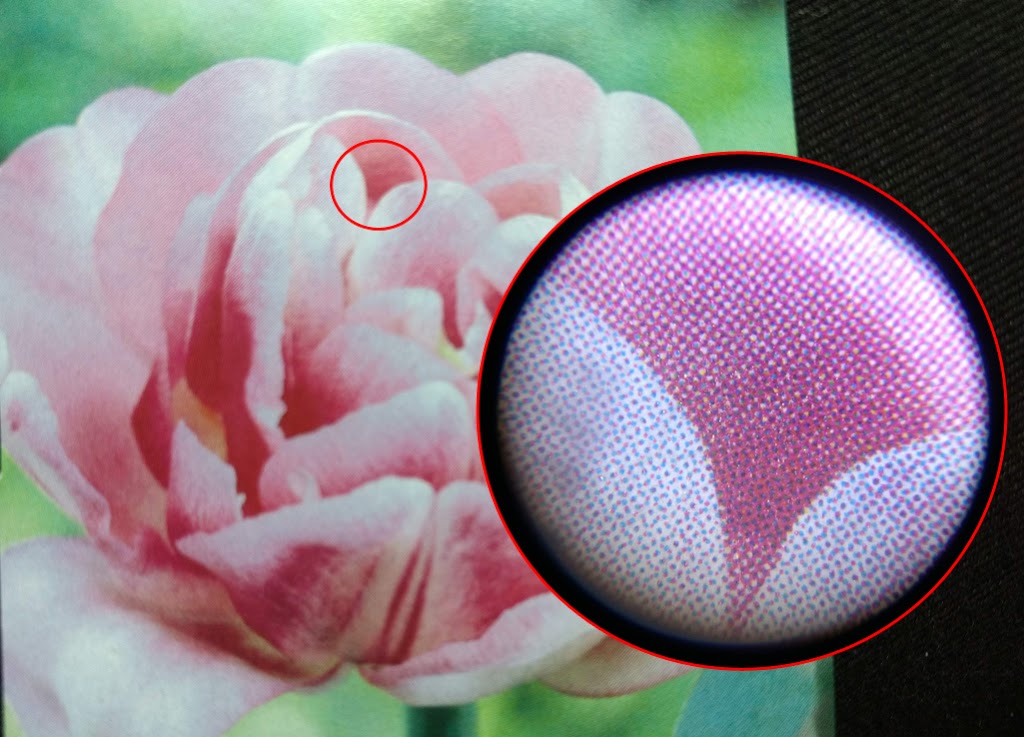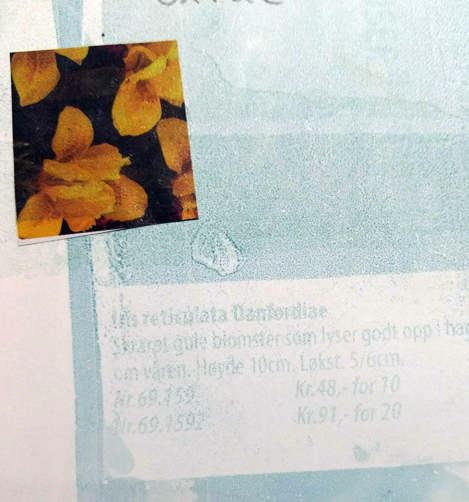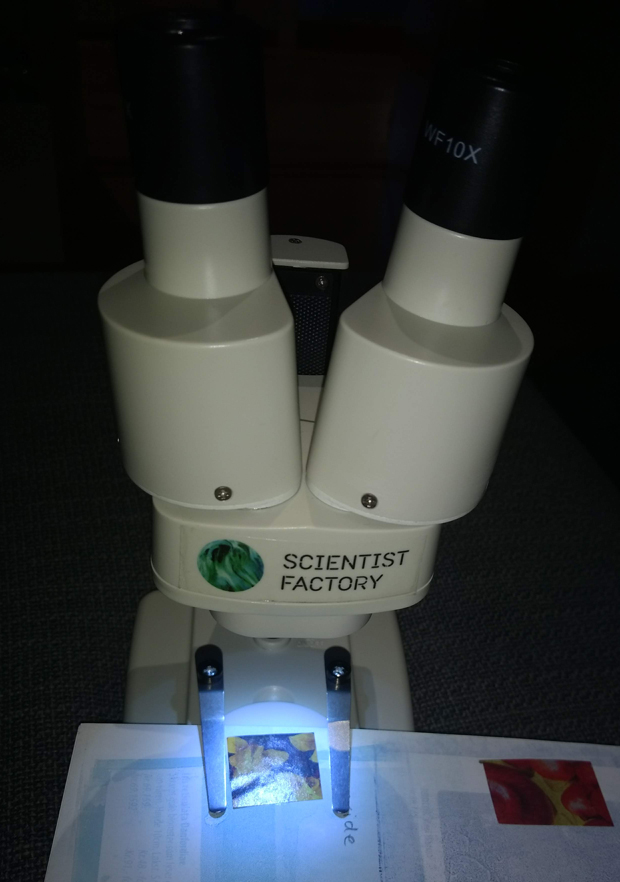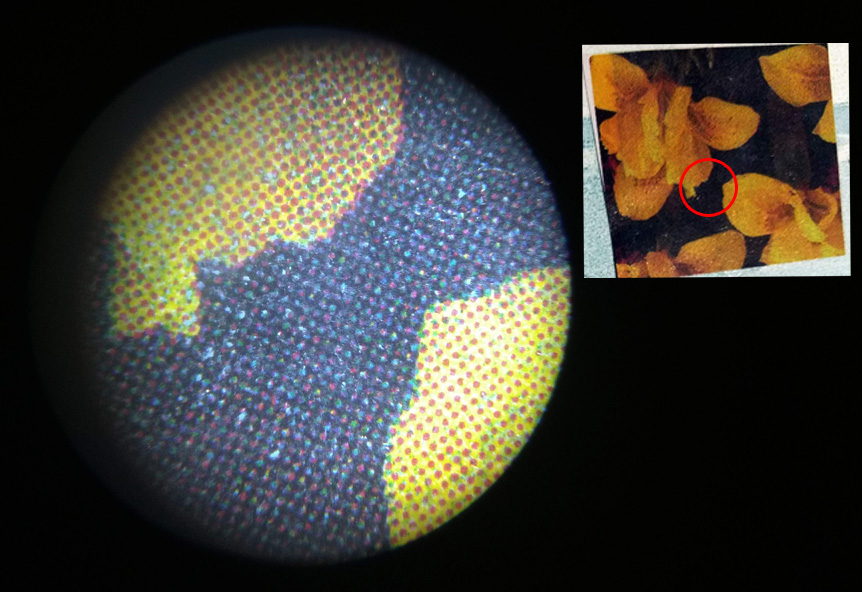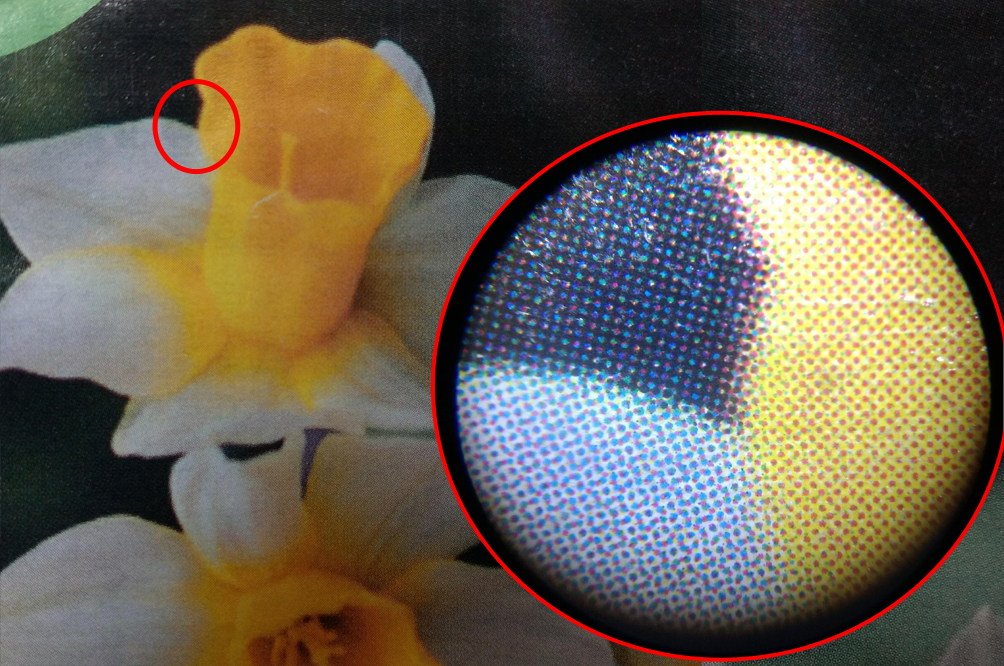I’m really fascinated by the videos showing how the gelli plate can be used to transfer images from a magazine using resist print technique. Here is one video using pigment ink (Distress Oxide). It is really not an image transfer as the colors are not transfered. It is a resist print. White and light color areas of a magazine page has no or less glossy ink. When the magazine page is applied to the wet paint or ink on the gelli plate, the paint/ink is absorbed by the magazine paper in the white and light areas. When pressing your paper onto the gelli plate will give you the resist print as you can see I have done with the flower image below.
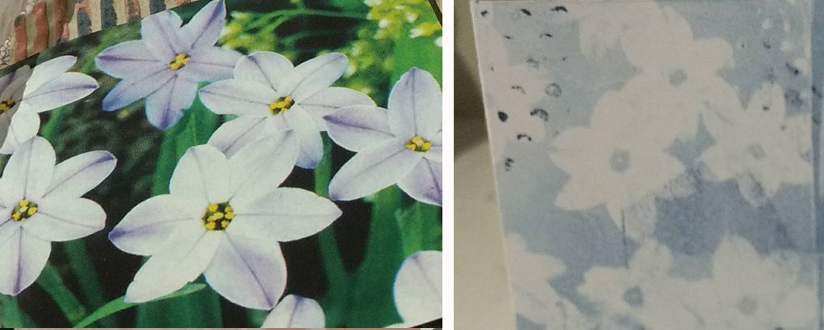
This technique, though, is regarded as quite unpredictable – what will be absorbed and what will be resisted. My craftroom-experiments have removed some of this mystery for me. Keep reading 🙂
It’s about the halftones
I have testet with distress ink and oxide to find out whether I could get more control. And I have found a great predictive value by borrowing a simple microscope from my son and learning about halftone-printing.

Most videos I have seen also use fashion magazines and acrylic paint. Fashion is not my thing and acrylic paint for gelli plate is not my friend yet as I am busy with inks. I have asked my mother to donate her last year flower catalogues to me as she is a hobby-gardener. Flowers on cards are suitable for many occations.
Let’s experiment
I tried to find flower images of high contrast. Pink and yellow against dark background. See what happened. I cannot see the yellow flowers and the yellow center of the pink flowers also resist the ink.
Why do the pink work, but not the yellow? Well – continue reading…
A proper experiment needs a microscope
I asked my son to borrow his little microscope. It is a 10x zoom. I would like to look at the print to see if it were dots of CMYK colors with different amounts of white-space in between.
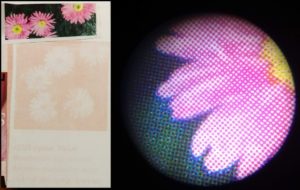
The conclusion
So – look for the white in the images. Yellow is a light color, but for resist print ink is ink wether it is yellow or black. Paper not covered by ink absorb the paint or distress ink and paper covered by ink will resist it and stay on the gelli plate. Take a look in the microsope or a good spy glass to analyse the white space to predict the result of the resist print. You could also flex the magazine page in the light to see where it is more or less glossy. Here are som more microscope images to give you an idea on how this works.
Making cards with resist print


